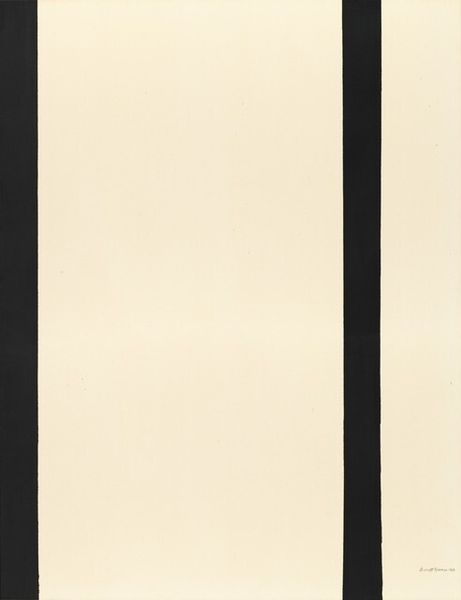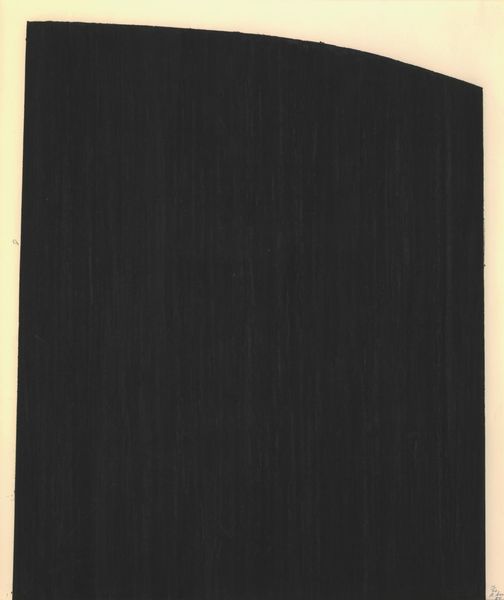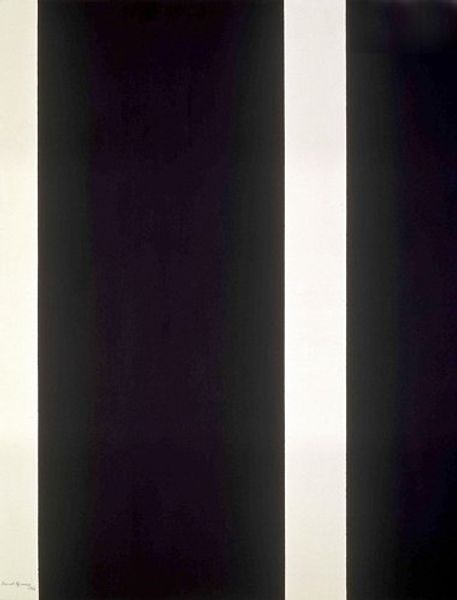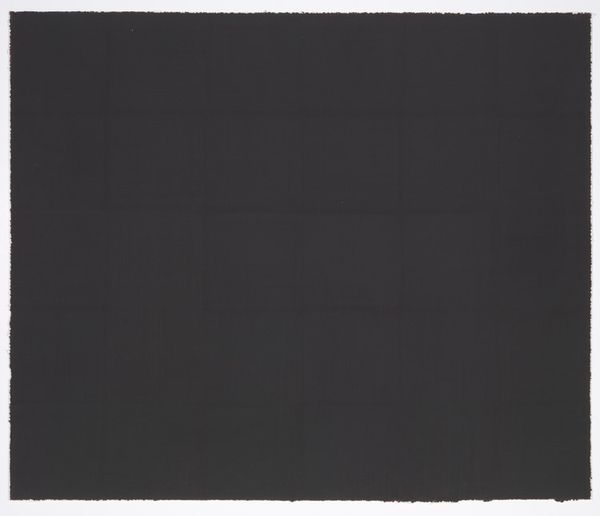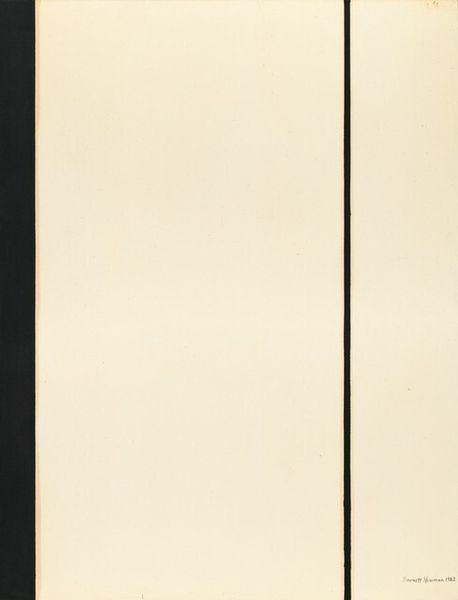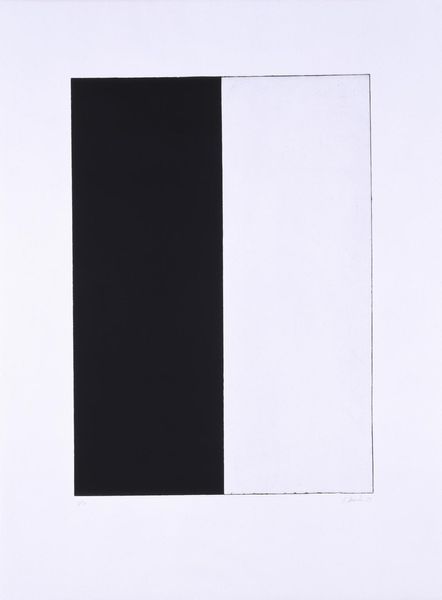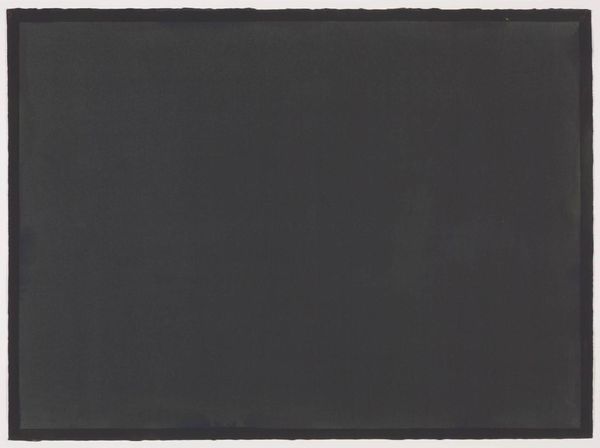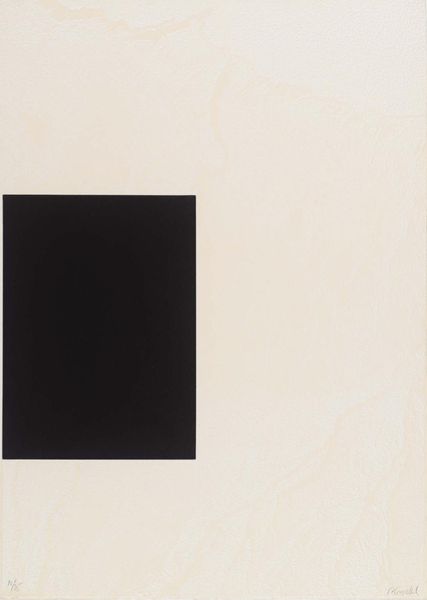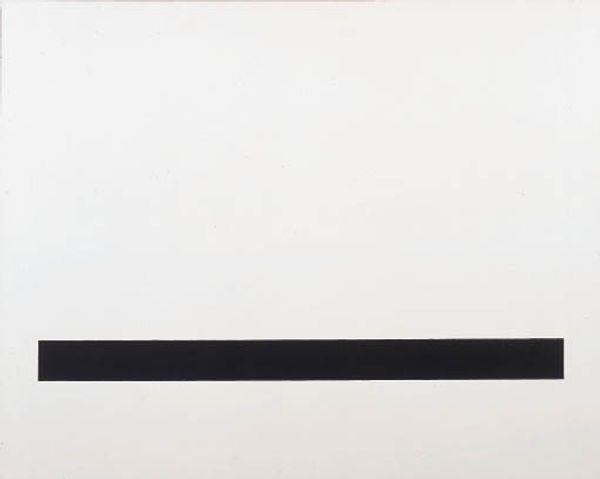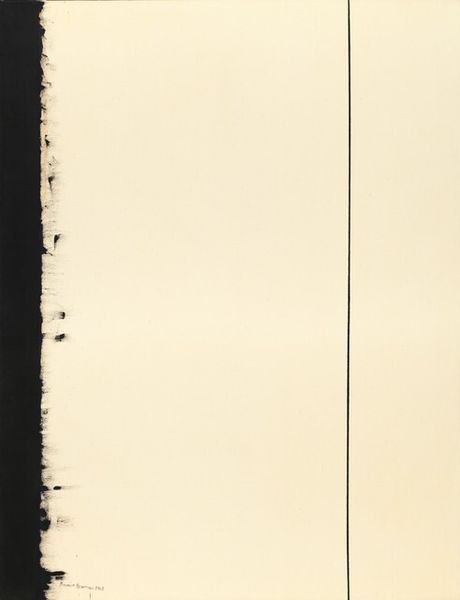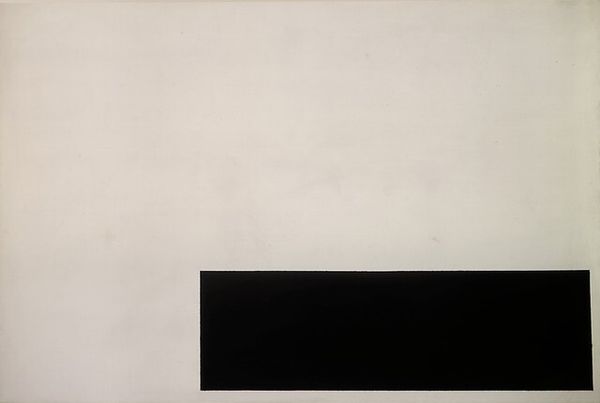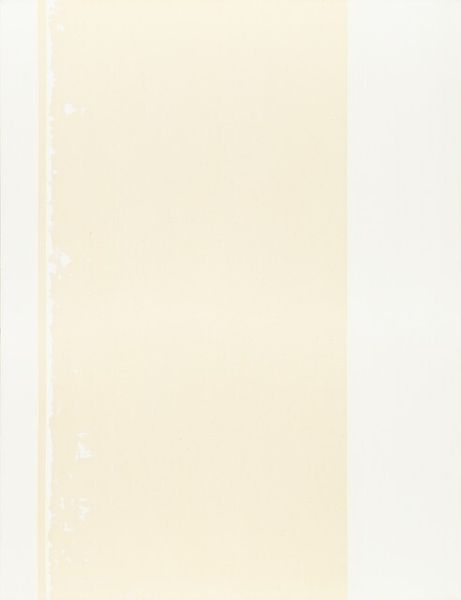
#
rhythmical white colour
#
natural stone pattern
#
op art
#
text art
#
repetition of white
#
embossed
#
simple pattern
#
monochromatic limited colours
#
varying line stroke
#
tonal art
Dimensions: overall: 198.2 x 152.5 cm (78 1/16 x 60 1/16 in.)
Copyright: National Gallery of Art: CC0 1.0
Editor: We are looking at Barnett Newman's "Thirteenth Station," painted between 1965 and 1966. It's striking in its simplicity—stark black fields divided by a vertical white line. The scale is quite imposing. How do you interpret this work, focusing on its visual language? Curator: Formally, we must observe the insistent verticality, the interplay between void and presence enacted by the black fields and the "zip," as Newman termed the white vertical line. Consider how the contrasting colors, black and white, operate. They don't just depict; they *structure* our experience of the painting. Do you notice the subtle variations in the black fields? Editor: Yes, now that you mention it, the black isn't uniform. There are slight shifts in tone, almost like looking at different densities. What’s the impact of these tonal shifts? Curator: Precisely. Those shifts introduce an element of dynamism, preventing the composition from becoming static. The "zip" isn’t simply a divider; it’s a formal element that activates the surrounding space, calling attention to the surface and materiality of the canvas. We can contemplate how it makes us reconsider figure-ground relationships in painting. Editor: That’s fascinating. It seems that what at first appeared simple is actually a complex interplay of form and color. It prompts one to really analyze line, tone and field. Curator: Exactly. The genius of Newman lies in his capacity to elicit profound contemplation through ostensibly minimal means. He reduces painting to its essence: pure form, color, and the sublime encounter of the viewer before the canvas.
Comments
No comments
Be the first to comment and join the conversation on the ultimate creative platform.
